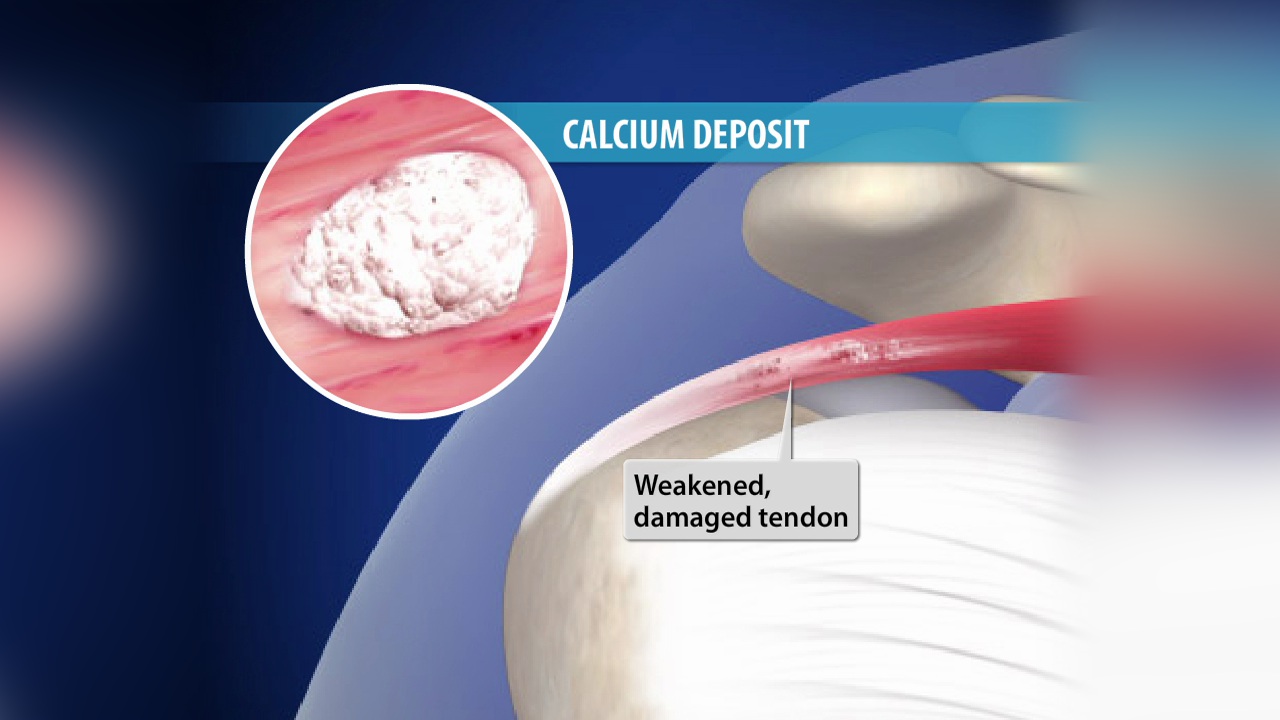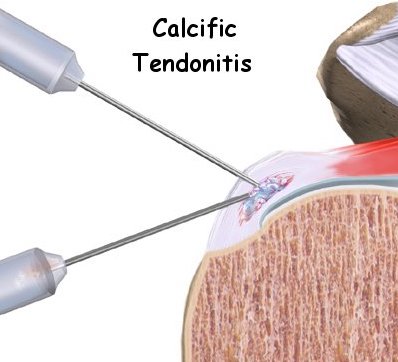Calcific Tendonitis
Tendonitis is a common form of shoulder pain that affects people aged between 40 to 60 years. Studies show that women are more vulnerable to this problem. It can happen anywhere in the body, but it is usually found in the rotator cuff. Calcium deposits build up in the tendons of the rotator cuff. The cause of this build-up is not yet clearly known however it can be resolved.
What is Calcific Tendonitis?
Calcific tendonitis is the build-up of calcium inside or around the tendons of the rotator cuff. More specifically, calcium hydroxyapatite crystals are found in the supraspinatus and infraspinatus tendons. The building up of calcium in the tendons puts more pressure on the tendon and also causes a chemical irritation. This causes immense pain and loss of normal function in the rotator cuff. The calcific deposits decrease the space calcific between the rotator cuff and the acromion which can lead to subacromial impingement. The deposits may cause inflammation in the shoulder. The condition develops over a period of time, which causes chronic pain.


What causes Calcific Tendonitis?
Various reasons are known to have caused calcific tendonitis
- Unusual activity of the thyroid gland
- Issues regarding metabolism
- Abnormal growth of cells
- Wear and tear of rotator cuff tendons
- Genetic vulnerability
- Damages suffered by the tendons
- Lack of oxygen provided to the tendons
It’s a very common problem in people who are involved in sports or people who repetitively raise their arms up and down for work. Aging as a cause should also be considered. Calcific tendonitis can affect anyone.
What are the symptoms of Calcific Tendonitis?
The most common symptom is discomfort in the shoulder due to the formation of calcific deposits which will then lead to shoulder pain. The pain is usually felt in the front or rear of the person’s shoulder and down their arm.
As the calcium deposits increases in the rotator cuff, the pain will become intense. Loss of range of motion will happen, eventually. The person will find it difficult to sleep on the affected area.
Depending on the building up of calcium deposits, the pain will either increase or subside. The pain can sometimes be so intense it can leave the shoulder disabled.
It is also to be noted that around one-third of the people suffering from calcific tendonitis do not experience any noticeable symptoms.
Diagnosis of Calcific Tendonitis
If the patient is experiencing continuous and unusual shoulder pain, visit the doctor.
The doctor will carry out a physical examination of the affected shoulder area. They will look into the medical history of the patient and ask about the symptoms. They may ask to lift the arm and move it in circles to assess the range of motion.
Next, the doctor will recommend getting an X-ray done as the calcific deposits can be seen. Ultrasound is more preferred as it is better to find small calcific deposits and also the directions of the deposits. Blood vessels around the calcific deposits can also be seen.


Treatment and recovery for Calcific Tendonitis
Numerous treatment options are available for calcific tendonitis.
If the pain is not severe, the doctor will prescribe medications that include nonsteroidal anti-inflammatory drugs. If need be, the doctor will prescribe corticosteroid injections which will help in reducing the pain and swelling.
Physiotherapy is also recommended as it has proven to be very beneficial in restoring the range of motion and providing more flexibility.
Extracorporeal shock-wave therapy (ESWT): This therapy involves a small handheld device that gives mechanical shocks to the affected shoulder where the calcium deposits are located. These shocks then help in breaking up the calcific deposits. A higher frequency of shock-waves proves more effective. The shocks can be painful and should be given according to the patient’s tolerance level. This treatment can be taken once a week.


Radial shock-wave therapy (RSWT): This therapy is very similar to the ESWT and involves a handheld device that provides shocks provides pain relief and improves shoulder functionality.
If the pain is severe and cannot be cured by the following methods, surgery is recommended to remove the calcium deposits.


The recovery duration depends on the location, size, and the number of calcium deposits. It varies from person to person. Some may recover within a week and for some, it may take months depending on the method of treatment and severity of it.
Conclusion
Calcific tendonitis is a very common problem faced by individuals. It causes pain, discomfort and affects a person’s range of motion.
The problem can be resolved with medication and therapy.
It is also to be noted that some people do not experience any symptoms and can also disappear on their own without any treatment.
